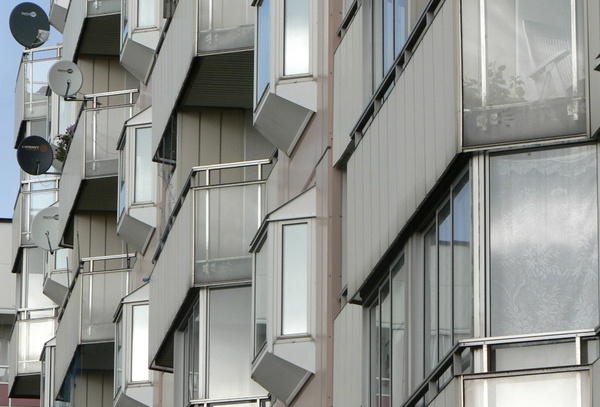
Bjarne Stenquist discusses a prototype area-based investment project being trialled in the south of Sweden. This article is part of the Social Life of Cities series with the Urban Times.
Neglected buildings, green-house emissions, child poverty - this is the situation in many of Europe's tower-blocks. Could these problems be turned into the foundation for new forms of cooperation, better use of public money and true place-making with people at the centre? This approach is now being tried out in the "Regeneration dialogue" in Lindängen, an area of apartment blocks built in the 1970s, with employment levels below 50% in Malmö, Sweden.
In short: the idea is to develop a prototype for an area-based investment fund for social and environmental sustainability. Developing such a fund can be the vessel to bring together actors from the private, public and civic sector in a process to jointly understand and develop solutions for local areas, like Lindängen.
This will be done through a step-by-step approach that initially focuses on both values and monetary streams in these neglected areas. Since these areas generally lack bigger manufacturing or service employers, "value" is often tied to housing property. However, in Lindängen this in risk of serious deterioration. One part of the equation is the pent-up investment needs, including investment needed for energy efficiency.
The monetary streams into Lindängen are to a large extent costs of social exclusion, paid by public actors such as social services, employment agencies, insurance agencies, health providers and law-enforcement agencies. How large are these costs in a given area? Getting the numbers in place is a huge step forwards, and helps with finding new ways to bring together different resources in a regeneration process aimed at creating maximal social and environmental impact.
Innovation often comes from combining existing resources and actors in new ways. In Lindängen we are doing this by engaging the actors (as of today three private housing providers, local social services, employment, insurance and health services and a number of NGOs) in drawing up a joint "socio-economic balance sheet" for Lindängen.
This balance sheet needs to include the investment needed to "future proof" 1,700 apartments with 4,000 inhabitants, and direct and indirect costs for social exclusion in Lindängen. Preliminary figures suggest a pent up investment need of €120 million (of which half is directed towards energy savings) while costs for social exclusion accumulated over four years runs at € 140 million.
These numbers can then be used to find a "break-even" point where a certain level of job creation and social mobilisation results in measurable savings in public systems, as well as in energy and maintenance costs. Savings that, through a social impact investment approach, can be used to put the necessary investments in these neglected areas into place.
This can be seen as extension of existing urban development funds financed by the European Investment Bank (such as Jessica), with a stronger orientation towards social mobilisation and local social and environmental impact.
So how is this being taken forward? In Lindängen, the three property owners involved in the "Regeneration dialogue" cannot make the needed investments stack up economically without huge hikes in rent (typically rises of 40 to 50 per cent). In other parts of Malmö and Sweden, such large increases in rent have forced out large numbers of tenants. The irony is that it is the tenants with jobs (often low paid) that are forced out by rent rises, while for tenants on social benefits, the increase in rent is picked up by the public purse.
The process and financial instrument under development in Lindängen aims at untying this knot by creating a business model that generates opportunity for investment through local job creation and social mobilisation. The main target group are the unemployed in Lindängen.
The Regeneration dialogue aims at creating local impact by promoting regeneration work with contracts conditional on local job creation and social improvements. This would include setting up a local recruitment and training company, moderate increases in rent, and realising substantial energy reductions or implementing local energy production. The aim is to generate "cashable" long term savings in public transfer systems.
Impact could be measured through employment levels, number of local jobs created (for example, in construction, in maintenance, in social enterprises), number of households on social benefits, energy reductions, and levels of wellbeing.
But maybe the most longstanding impact will be a new culture based on social innovation and social investment, embedded among a wide variety of actors, who up till now have lacked common understanding and a common language, as well as common strategies to tackle the "wicked" problems that exist in Lindängen and "les banlieues de l'Europe".
The initial scale of the project is Lindängen, an area with roughly 7,000 inhabitants in the borough of Fosie in Malmö. If a prototype can be made to work in Lindängen, Malmö alone has more then twenty similar areas with 1960s and 1970s housing in various stages of neglect. In Sweden 650,000 multi-storey dwellings were built from 1965-1975, many in areas with characteristics like Lindängen.
According to Professor Michael Koch at the HafenCity Universität in Hamburg, there are 37 million tower-block apartments in western European Union states, and 10 million in Eastern European states. The Regeneration dialogue is working on establishing a Memorandum of Understanding with EIB (the European Investment Bank) to make them a partner in developing an area-based investment fund, building on lessons learnt from, for example, the JESSICA urban development funds.
Tough local and national context differs among European, countries, similar approaches to a successful "Lindängen model" could be used to unlock the creative potential of "les banlieues de l'Europe", contributing to smart, sustainable and inclusive growth in Europe.
Bjarne is project manager of the Environmental Department of the City of Malmö. He is currently managing the Regeneration dialogue - developing tower-block regeneration as a tool for large scale social innovation. E-mail: bjarne.stenquist@malmo.se